Crackly crusts, tender interiors, and centuries of tradition—French bread is so much more than baguettes. Each loaf tells a story, shaped by region, technique, and the rhythm of daily life in France.
Some are braided and enriched with butter, while others are rustic and barely tamed by flour and fire. Here’s a look at 15 distinct types of French bread that showcase the country’s delicious devotion to dough.
1. Baguette
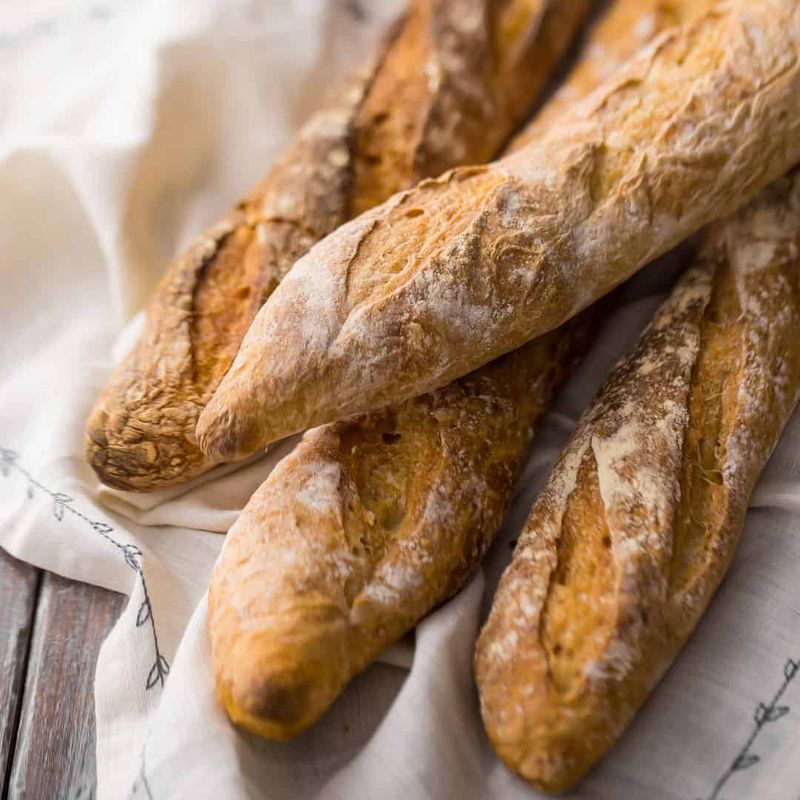
Ah, the rock star of French bread! This long, thin loaf with its crackling crust and pillowy interior has become France’s edible ambassador to the world. One bite of its crisp exterior gives way to a tender, slightly chewy middle that’s heaven with a swipe of salted butter.
Baguettes must follow strict rules—26 centimeters long, weighing exactly 250 grams, and made with only flour, water, salt, and yeast. No shortcuts allowed!
2. Boule
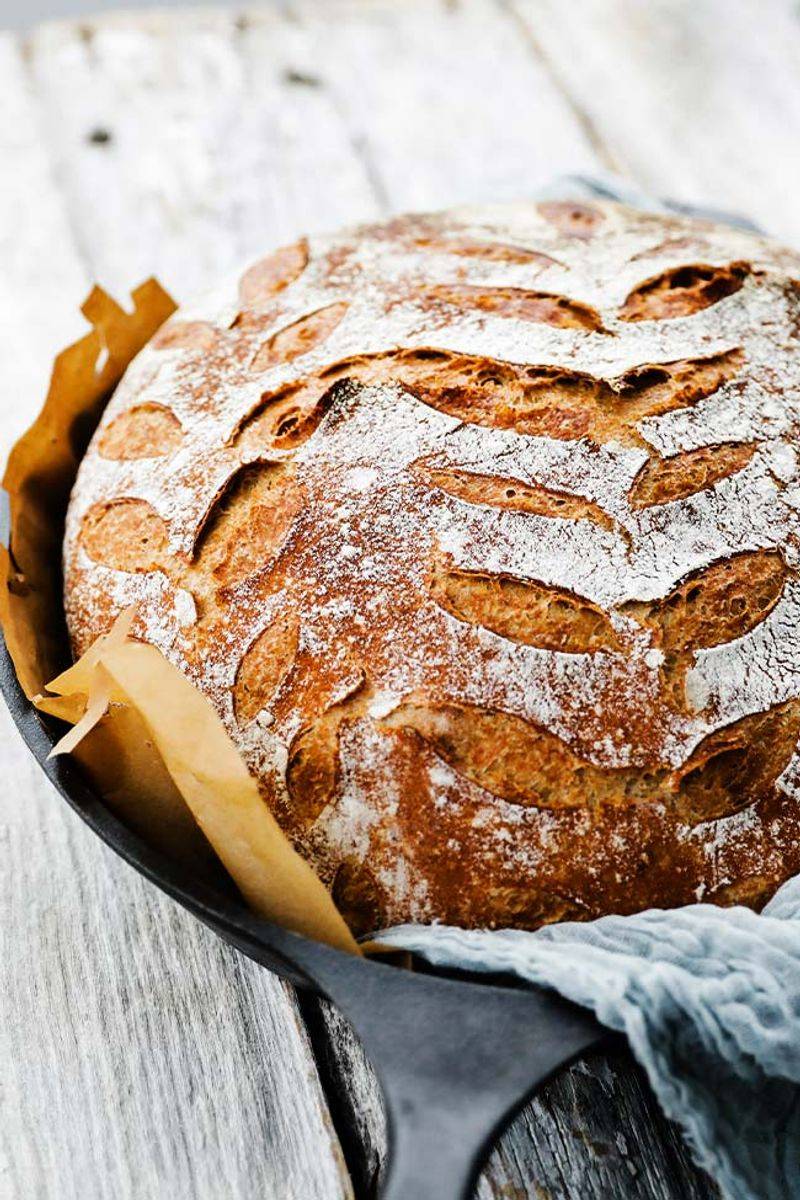
Round, rustic, and ridiculously satisfying—the boule literally translates to “ball” in French, but there’s nothing simple about this bread’s complex character. Sporting a thick, hearty crust that shatters gloriously when sliced, the boule reveals a dense yet tender interior perfect for sopping up stews or supporting generous layers of cheese.
Dating back centuries, this was the everyday bread of French peasants who shaped their dough into these practical rounds before community oven-baking day rolled around each week. The circular shape maximizes crust-to-crumb ratio.
3. Batard
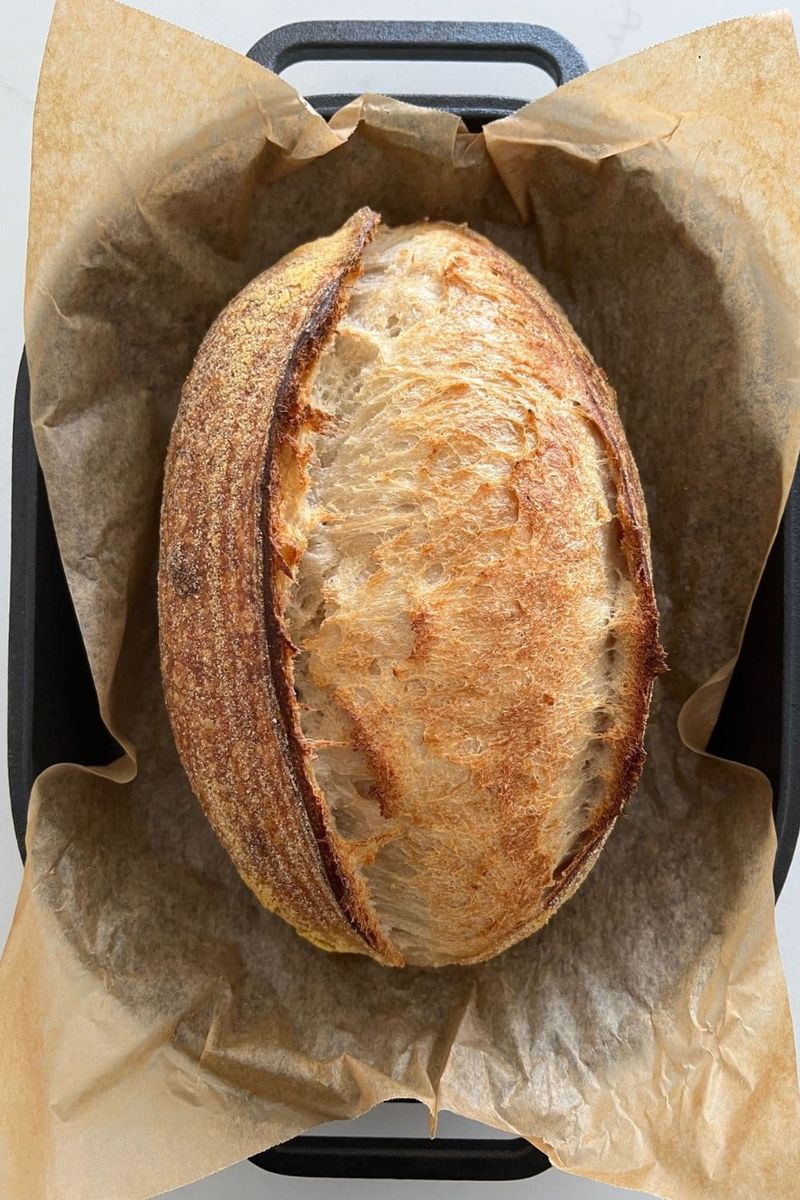
Half baguette, half boule—the rebellious “bastard” bread of France breaks all the rules! Shorter and plumper than its skinny baguette cousin but more elongated than the rotund boule, this magnificent hybrid delivers the best of both worlds: substantial enough to make killer sandwiches while maintaining that quintessential crisp-outside, tender-inside French bread magic.
Bakers secretly love batards because they’re more forgiving to shape than temperamental baguettes. The generous interior-to-crust ratio makes it perfect for hearty sandwich construction or accompanying soups.
4. Pain De Campagne
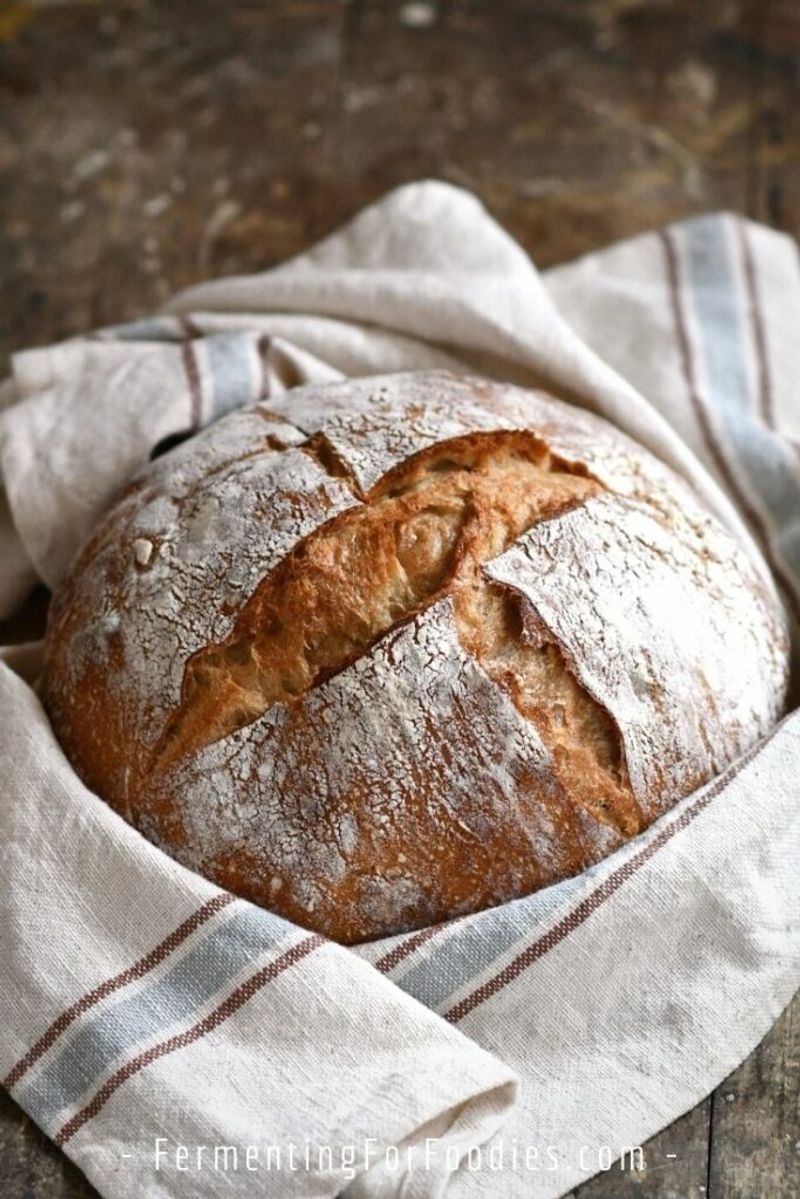
Country bread with attitude! This rustic loaf doesn’t just feed you—it tells stories of rural French life through its robust texture and complex flavor profile. Traditionally made with a natural sourdough starter rather than commercial yeast, pain de campagne delivers a slight tanginess that makes your taste buds do a happy dance.
Before modern refrigeration, French country folk needed bread that lasted, so this hearty loaf was designed to stay fresh for days. The addition of a small percentage of rye or whole wheat flour gives it distinctive character and depth.
5. Pain Complet
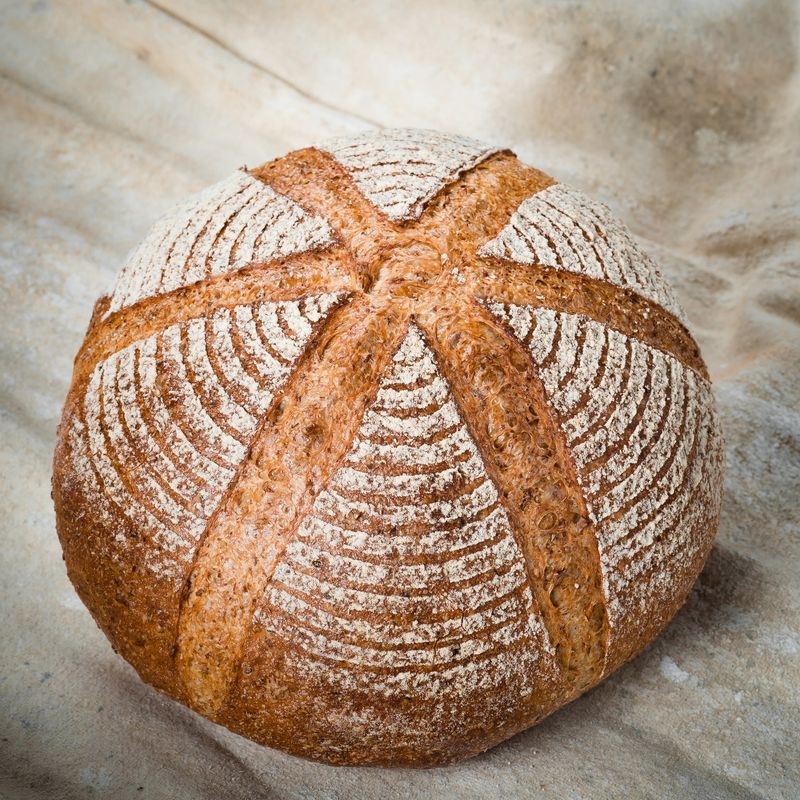
Who said French bread can’t be healthy? Pain complet crashes the white-flour party with its wholesome whole wheat attitude and nutty flavor profile that makes health nuts and foodies equally giddy. Unlike its refined cousins, this hearty loaf keeps all the good stuff—bran, germ, and endosperm—for maximum nutritional punch.
The French approach to whole wheat isn’t about dense, dry “health bread.” Instead, skilled bakers create loaves with surprising lightness despite their wholesome ingredients. The natural oils in whole wheat give pain complet a shorter shelf life but infinitely more complex flavor.
6. Pain De Mie
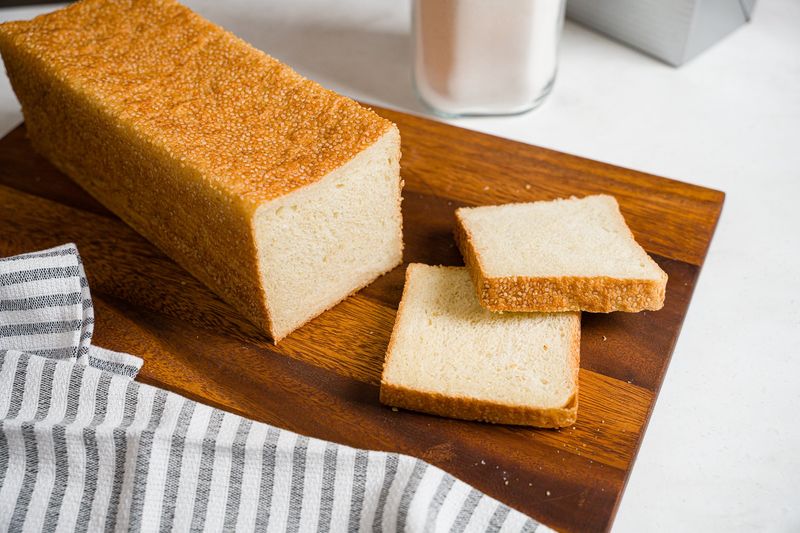
Forget everything you thought you knew about French bread! Pain de mie breaks the crusty stereotype with its velvety soft texture and perfectly rectangular shape that makes it the secret weapon for next-level sandwiches and toast. Baked in a lidded Pullman pan that prevents crust formation on top, this bread is all about that cloudlike interior.
The name “mie” refers to the crumb or interior of the bread, which is the star of this show. Enriched with butter and sometimes milk, it’s France’s answer to American sandwich bread but with significantly more character and flavor.
7. Ficelle
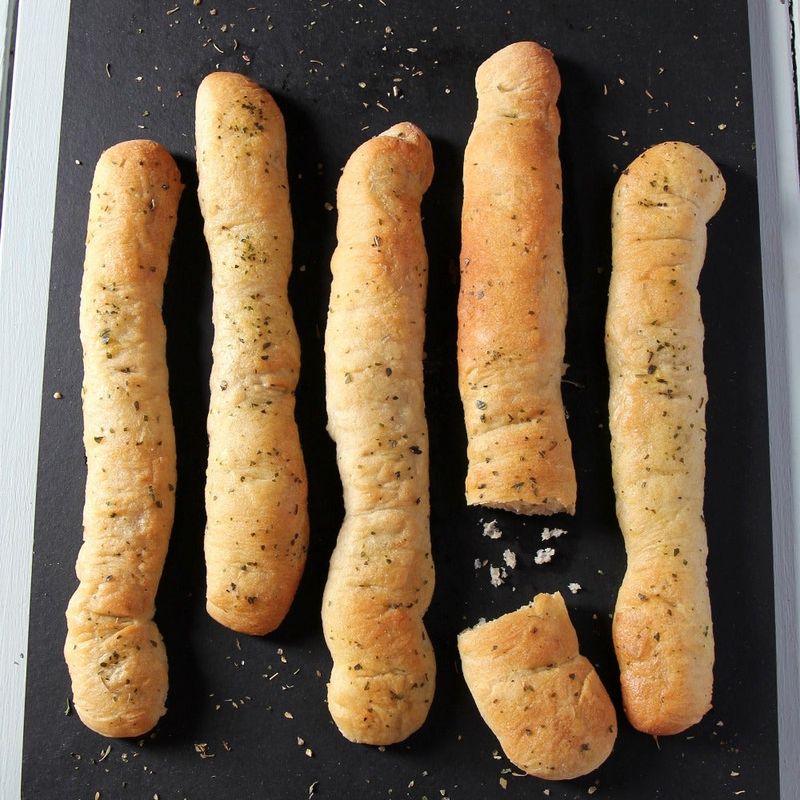
Skinnier than a supermodel and twice as French, the ficelle (literally “string” in French) takes the baguette concept and puts it on a diet! This ultra-thin bread stick might look insubstantial, but it delivers an outrageous crust-to-crumb ratio that crust-lovers would kill for.
Perfect for the indecisive eater who wants just a taste of bread with their meal, ficelles are often served in high-end restaurants as part of bread baskets. Their diminutive size means they bake faster and develop an even crispier exterior than standard baguettes.
8. Flûte
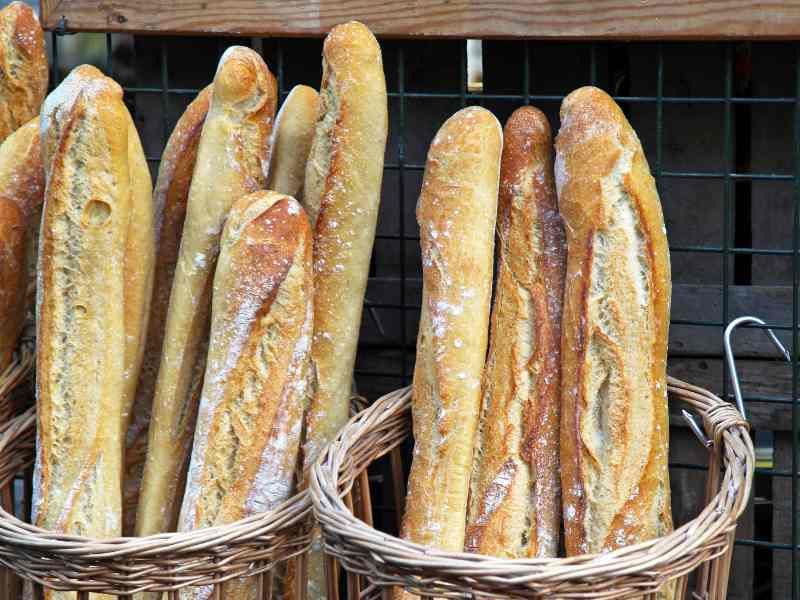
Not quite a baguette, not quite a ficelle—the flûte plays its own delicious tune in the French bread orchestra! Named after the musical instrument it resembles, this medium-diameter long loaf hits the sweet spot between substantial and delicate, with a magnificent crackling crust that deserves its own standing ovation.
Flûtes typically measure about 18 inches long but are slightly wider than ficelles and narrower than baguettes. The ideal size for small households or intimate dinners, they provide enough bread for two people without leftovers.
9. Pain Viennois
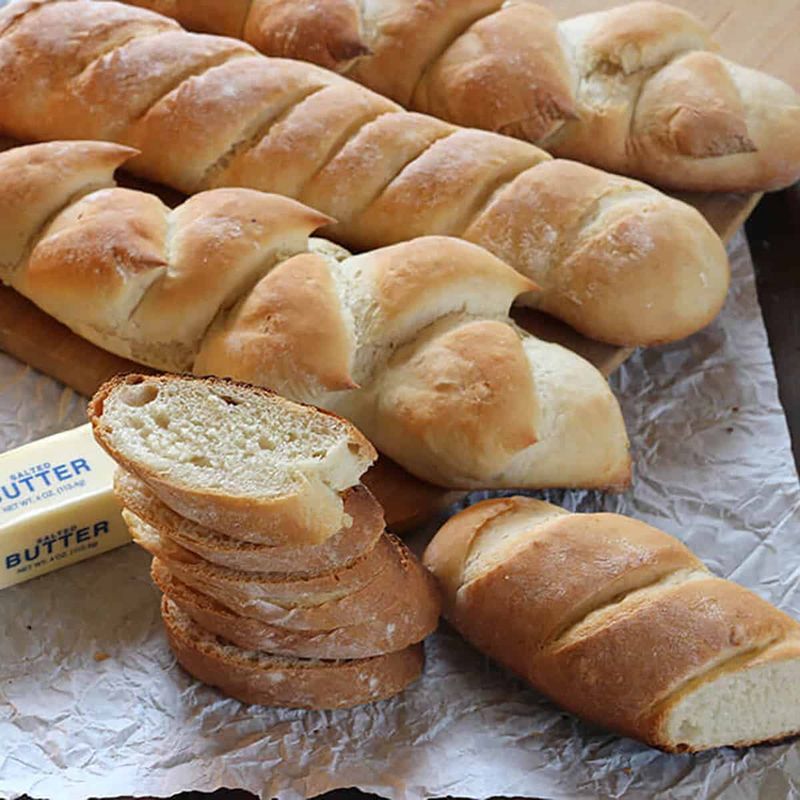
Sweet, sultry, and scandalously soft—pain Viennois is what happens when French baking has a passionate affair with Austrian techniques! This baguette-shaped temptress hides a secret: its dough is enriched with milk, butter, and a touch of sugar, creating a tender golden crumb beneath a glossy, caramelized crust.
Despite its name suggesting Viennese origins, this bread has been thoroughly embraced by French culture. The subtle sweetness makes it perfect for breakfast, where it’s often slathered with jam or used for pain perdu (French toast).
10. Pain Brié
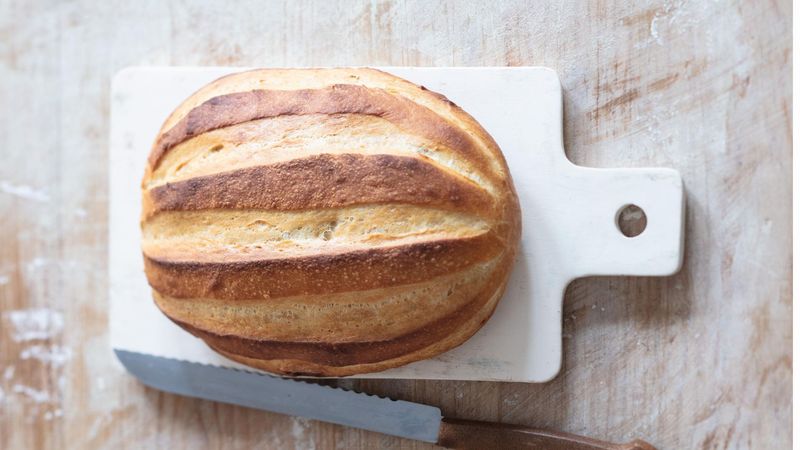
Normandy’s butter-loaded secret weapon will make you question everything you thought you knew about French bread! Pain brié doesn’t just contain butter—it’s practically swimming in it, with layers folded in through a technique similar to croissant-making that creates a mind-blowing texture somewhere between bread and pastry.
The name comes from “broyer” (to pound), referring to the vigorous kneading required to incorporate all that Norman butter. This regional specialty from northwestern France develops a uniquely flaky yet tender crumb structure that shatters delicately when bitten.
11. Pain d’Épi
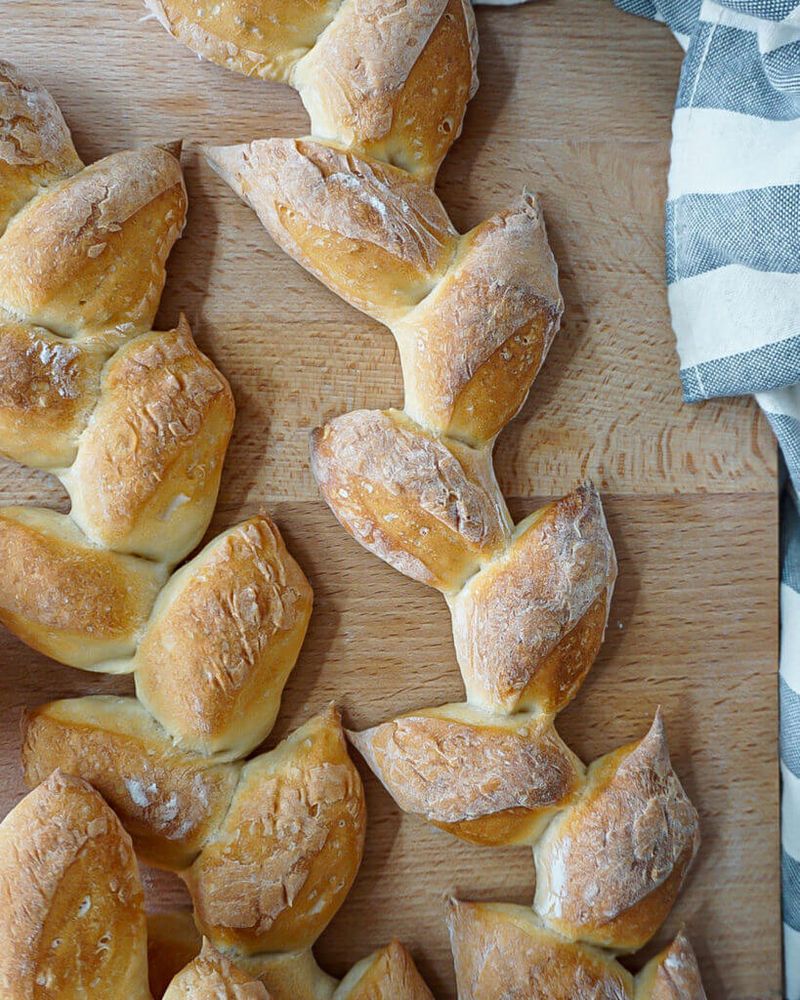
Mother Nature meets French baking genius in this showstopping bread designed to mimic a wheat stalk! Pain d’épi isn’t just delicious—it’s edible art that lets guests tear off individual “wheat kernels” without needing a knife. Special scissors-snipping technique creates the distinctive shape that never fails to draw gasps at dinner parties.
Made from standard baguette dough, the magic happens just before baking when bakers transform the ordinary into extraordinary through a series of angled cuts and gentle twists. The increased surface area creates more of the crust that French bread lovers crave.
12. Fougasse
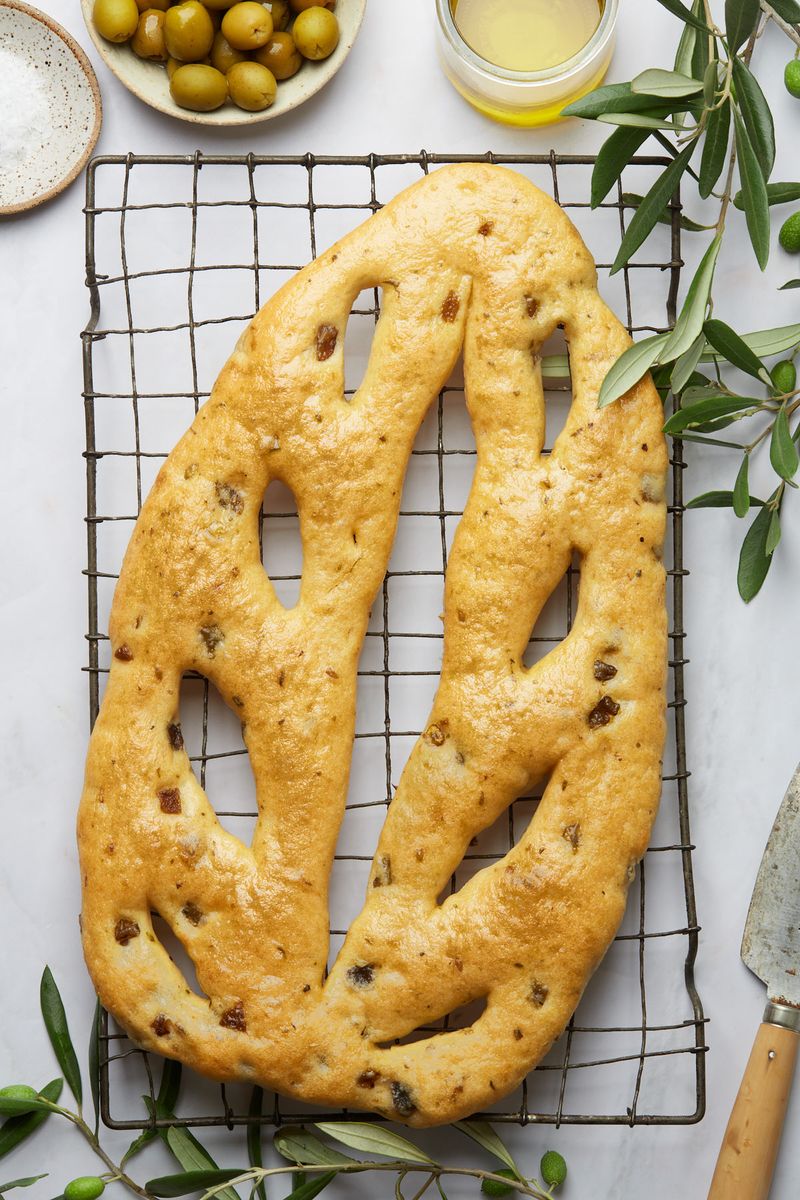
Slashed like a fashion statement and shaped like a leaf, fougasse isn’t just bread—it’s Provence’s edible artwork! This flattened, slashed creation comes from France’s sun-drenched south, where bakers cut distinctive patterns into the dough before baking, creating a bread that’s as beautiful as it is delicious.
Traditionally flavored with local Provençal ingredients like olives, herbs, or orange zest, authentic fougasse tells the story of its Mediterranean origins through both form and flavor. The distinctive cuts serve a practical purpose too—they increase surface area, creating more of that irresistible crust.
13. Brioche
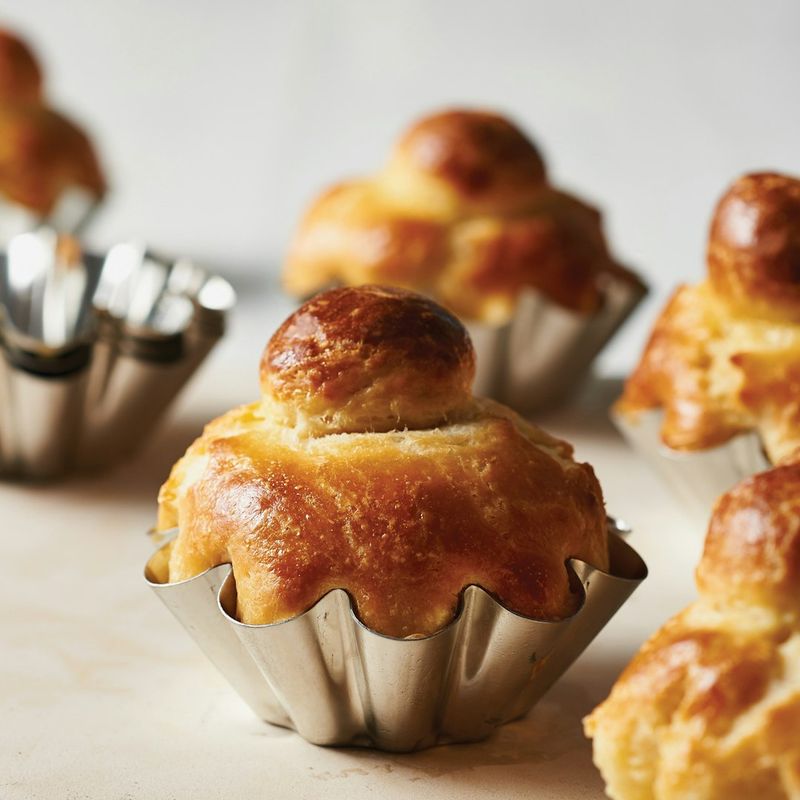
Is it bread? Is it cake? Is it butter that somehow learned to hold its shape? Brioche blurs all the boundaries with its obscenely rich, tender crumb that makes regular bread look like a boring cousin. This golden temptress contains so much butter and egg that 18th-century bakers classified it as pastry rather than bread!
The classic brioche à tête features a distinctive topknot shape that resembles a child’s head (hence “tête”), though you’ll find it in various forms throughout France.
14. Couronne
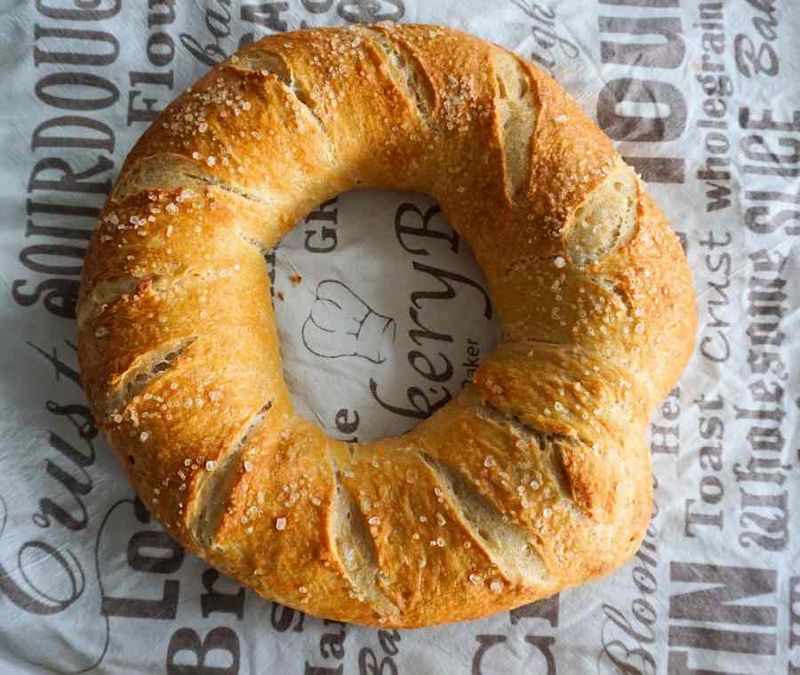
Fit for royalty, the couronne (literally “crown” in French) turns bread into a regal experience! This ring-shaped masterpiece transforms any table into a celebration with its impressive circumference and show-stopping presence. Breaking bread becomes a communal ritual as guests tear pieces from the golden circle.
Traditional couronnes feature decorative scoring that creates points resembling a crown’s peaks. Regional variations might include dried fruits, nuts, or even chocolate chunks folded into the dough, especially for holiday versions served during Christmas and New Year celebrations.
15. Pain Aux Céréales
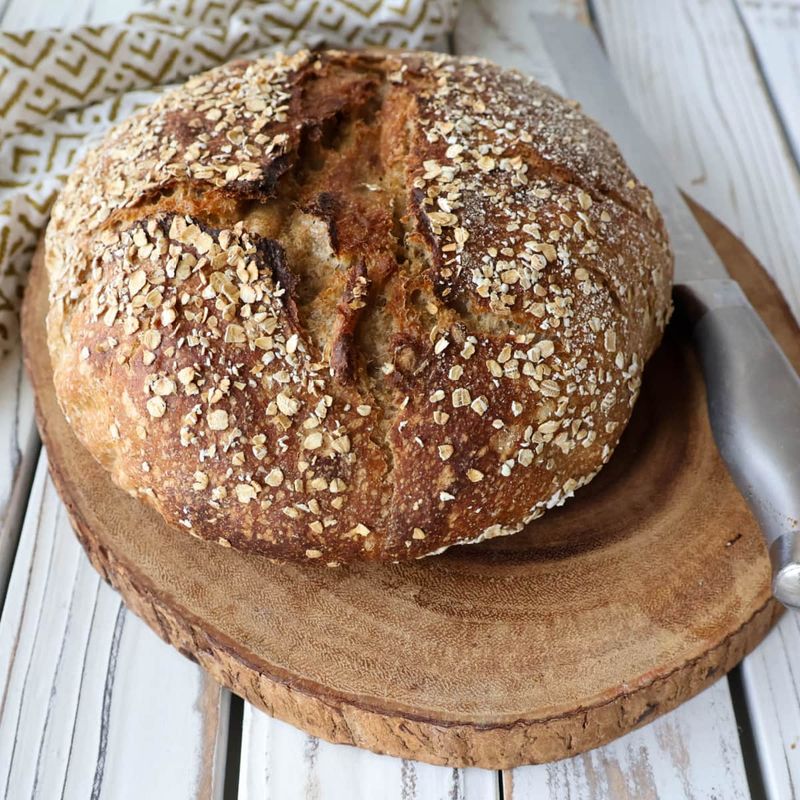
Seed fanatics, rejoice! Pain aux céréales is what happens when French baking embraces its crunchy, wholesome side without sacrificing an ounce of flavor. This nutritional powerhouse comes studded with a veritable garden of seeds—sunflower, flax, sesame, poppy, and more—creating a texture party that makes ordinary bread seem positively boring.
Unlike some heavy whole grain breads, French bakers maintain a remarkably light crumb despite the abundance of seeds and often whole grains. The seeds aren’t just tossed on top as an afterthought—they’re incorporated throughout the dough and generously coated on the exterior.

